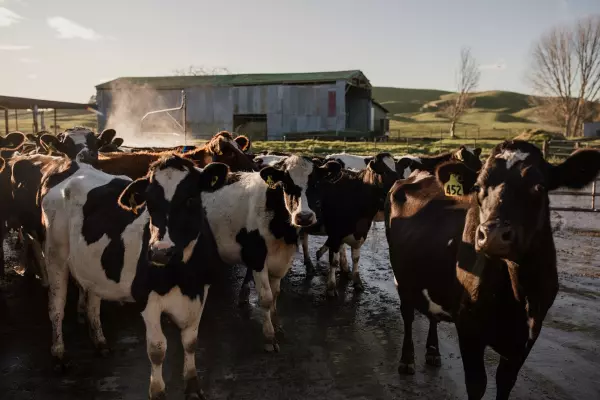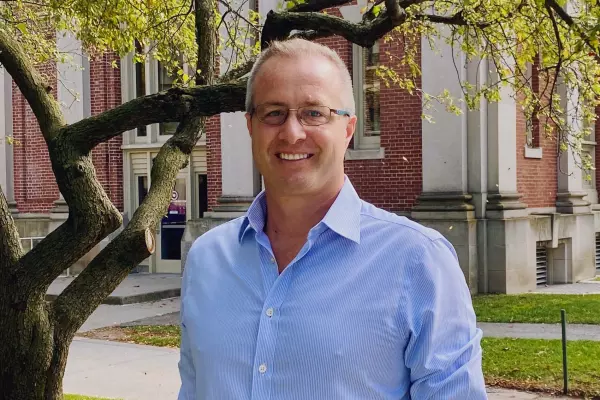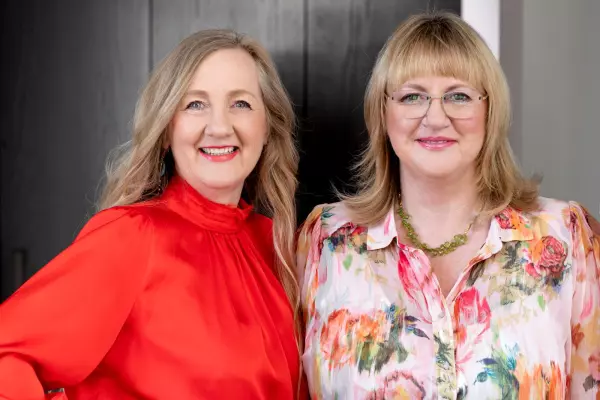Having a big high-profile brand is often seen as the key to success in the charity sector. Richard Jeffery was decorated for his community work and he couldn’t disagree more.
Jeffery believes “smaller is better” in the charity sector.
Four years ago, he was made an officer of the New Zealand Order of Merit (ONZM) for service to the South Auckland community. Now based in central Hawke's Bay, he is a trustee of Due Drop, a foundation that aims to distribute funds to those charities that best help the disadvantaged.
Speaking to BusinessDesk in a personal capacity, he is critical of the high overheads of large, established charities, and the idea that charities should aim to spend 25% of total funds raised on fundraising.
“I totally disagree. Why would I dilute it when there are lots of causes out there I could give my dollar to and 100% of it’s going to the coalface and will have more impact.”
Jeffery wants people to support small and local. In the business world there is an economy of scale as a company grows, he says.
“I would counter that in the charitable sector because as you grow, you lose your volunteer base and therefore your cost structure increases … without the corresponding ratio of output.”
Even collaboration among NZ’s large number of small charities is not a given.
“People say, ‘Oh, they should all work together and collaborate’. I say no, collaboration will happen naturally where it makes sense. But a lot of these small charities are run by volunteers and they’re actually doing good. They see a need in their local community and they fundraise locally,” he says.
Jeffery mentions a recent fundraiser for a local hall in Hawke's Bay that raised $12,000 over a weekend as an example of a grassroots initiative solving a local need.
“Now, when people say we should have one-size-fits-all, all that centralisation, it’s a step towards communism, in my view.”
Brickbats
Three big charities starting with ‘S” come in for Jeffery’s disapproval: the SPCA, the St Johns Ambulance Service and the Starship Foundation.
He says the SPCA has lost its way.
“They’ve become centralised, bureaucratic, out of touch with the community. They’re closing down animal shelters around the country when there’s still a need.”
Jeffery clearly keeps an eye on annual reports in the sector and says the SPCA only spent 8% on “animal experience” in the 2021 financial year.
“Furthermore, they made a net profit of $34 million and they say on social media they are lacking funds – meanwhile they closed our local Waipukurau branch due to lack of funds.”
Although he lives a long way from the capital, Jeffery would sooner donate to Wellington Free Ambulance than Auckland-headquartered St John. He pointed to St John’s $33m surplus in 2021, while frontline staff were stretched to the maximum.
Not everyone would agree. In April this year, St John announced it had won the Reader's Digest most trusted charity for the third year in a row.
Then there is the Starship Foundation. “I’d say no because only 70 cents in the dollar get there and they’re capital-intensive projects.”
Much of the Starship Foundation’s stated purpose is to help with capital projects, such as new intensive-care unit beds, along with covering the Starship air ambulance’s operating costs.
“If I was looking at Starship and the health sector in general, I’d be focusing on the op-ex [operating expenses] side, that’s where the pressure is. You’ve got staff burnout, [they're] underpaid, underappreciated,” Jeffery said.
The response
Naturally enough, those three charities don’t share Jeffery’s outlook.
SPCA chief executive Andrea Midgen said in a statement that the SPCA had merged 46 individual incorporated societies in 2017 after 16 were in financial difficulties and more were at risk.
“Rather than centralised and bureaucratic, we believe we have become more professional and have improved the quality of care for those animals in need.”
One aim of the merger was to avoid a postcode lottery where animal care was defined by location. There had been a rationalisation of centres that were relatively close to each other, Midgen said.
The SPCA had made extensive efforts to find someone to run the Waipukurau shelter but could not find a suitable part-time candidate despite multiple job advertisements, she said.
The Waipukurau centre cost a lot to run and the donations from the area were relatively small.
“I can assure the community that the animals will still be attended to, and we have inspectors, a field officer and a partnership with a local veterinarian.”
The $34m surplus in 2021 was a one-off funds transfer from the SPCA Auckland trust to a new fund and was needed to replace the ageing facility in Auckland with one up to modern disease-management standards.
Midgen described the building costs as “shocking”, but this was the reality of the current environment.
“Financially, it is very challenging with the rising costs, inflation and in particular wage inflation.
Why give to the SPCA? Midgen said animal welfare was its sole purpose, and it had the training and competence to address the issue of poor animal welfare.
“Most of our workforce are minimum wage or are volunteers, so it is only through their passion and commitment that we can do what we do.”
Starship Foundation chief executive Aisha Daji Punga said in a statement that the foundation didn’t just invest in capital projects but in people, equipment and innovation.
 Aisha Daji Punga is Starship's boss. (Image: Starship)
Aisha Daji Punga is Starship's boss. (Image: Starship)It focused on the greatest need and was currently funding more than 60 programmes. These included a national child injury prevention service, expanded vascular, pain and neuropsychology services and a national simulation training service for clinicians.
The foundation had also funded specialist staff and clinical research and fellowships, Daji Punga said.
As previously reported, the foundation boosted its research funding to $4.0m in the 2020 financial year, up from $839,000 in 2019.
St John general manager of performance planning and insight Zoltan Varadi said in a statement that a 2019 external review found the service to be cost-efficient compared with international counterparts. The review found no cross-subsidisation from the ambulance service to other parts of St John and commended the organisation's work on modernising and streamlining services.
In 2020, St John Ambulance requested urgent support from the government, after struggling financially from long-standing funding issues. As a result, the government allocated a one-off grant of $21m over two years, which had helped alleviate some immediate financial pressures, Varadi said.
A new four-year contract to run ambulance services lifted government funding from 72% to 88%. This would ensure its staff were well supported and reduce response times.
However, St John did rely on the generosity of New Zealanders to fund its community and health-related services, Varadi said.
Bouquets
Jeffery says there are smaller charities providing similar services in many cases. He cites the animal shelter, Saving Hope Foundation, as a good example. In the 2021 financial year, its expenses were around $556,000 of which $474,500 went on vet bills, and it ran a deficit of $25,411.
A charity that Jeffery singles out for praise is the Life Education Trust, which runs health and wellbeing sessions in schools and features the mascot, Harold the giraffe.
“That, to me, is a fantastic model because they have a centralised head office that provides resource, curriculum and branding. But then it’s up to the local areas to form their own subsidiary trusts.”
Jeffery says the online Charities Register gives access to a charity’s accounts to try to work out their output. “But a lot of people just don’t have the time or inclination to do that. And that’s why I’m an advocate for supporting small and local.”















